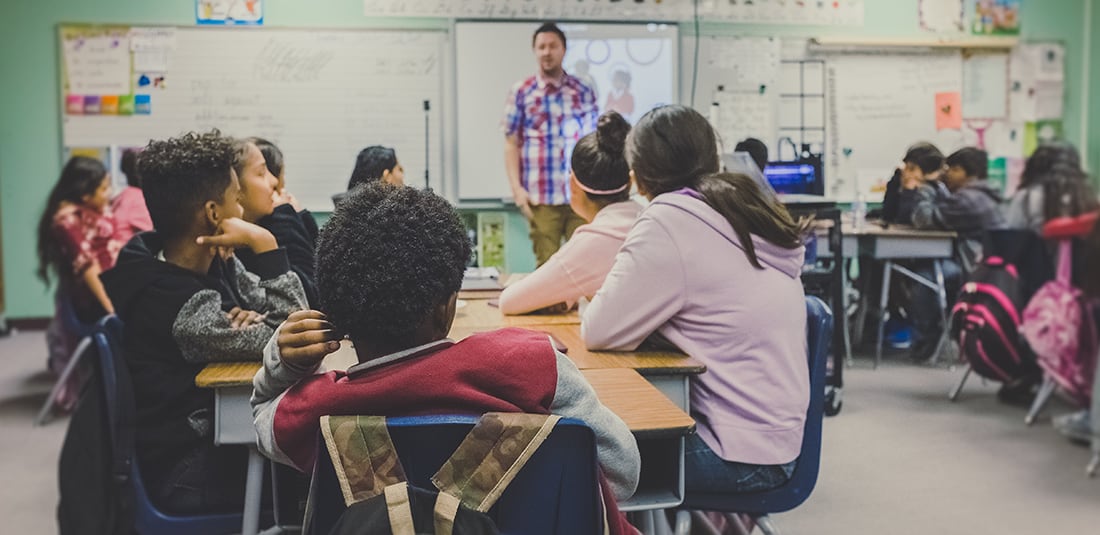


If you repeat a lie often enough it becomes the truth. This is known as the illusion-of-truth effect. Or, a lie.
A recent Lewiston Tribune editorial, “Freedom Foundation declares war on your schools,” used the illusion of truth to attack the Idaho Freedom Foundation’s support for education choice. The editorial promulgates a series of myths.
IFF is committed to funding students, not systems. Schools exist to educate children, not to feed teachers union coffers or employ administrators.
The first myth the editorial propagates is Idaho schools are “chronically under-funded.” Idaho has the lowest expenditure per pupil in the country. Extensive research, however, has shown Idaho schools are not under-funded and increased funding does not improve learning outcomes.
The Tribune suggests Idaho schools need more money during COVID-19. This is false. Other advanced economies spent less on education than the U.S. and already re-opened. For example, Israel spends $8,500 per-pupil, which is less than Idaho’s $9,440 per-pupil, yet Israel has safely re-opened schools.
Idaho districts prove safe reopening is possible. Numerous districts, including Bonneville and Madison, offer in-person classes for all students, have avoided serious outbreaks, and kept schools open. This reflects a recent Brown University study that examined 550 schools across 46 states and found less than 1 percent of teachers and students contracted COVID-19.
The second pernicious myth the Tribune promoted is: Education choice will siphon money from public schools, hurting poor, minority students. This ignores the fact that the current system of public schools is trapping those very students it claims to help. Due to compulsory education laws, public schools maintain a virtual monopoly on education by keeping a student base regardless of performance. Some Idahoans can exit the system. Most still have to attend public schools. So, the public school system faces little incentive to innovate.
Idaho public schools reflect this failure. According to the Nation’s Report Card, Idaho students’ test scores have been stagnant for seven years. Since 2013, reading scores for eighth grade Idaho students have decreased 4 points. Similarly, since 2014, fourth grade math has only improved 1 point.
Since 2015, Idaho’s graduation rate has only improved by 1.09 percent.
Education choice could change this.
The University of Arkansas conducted a review of education choice studies and the vast majority show choice has “a statistically significant positive effect on student test scores.” Education choice helps minority students, too. Harvard University and Brookings Institution researchers recently found a voucher program boosted college enrollment among African American participants by 24 percent.
Another Harvard University study shows education choice benefits public schools and not just students who switch to private schools. Like all other industries, competition in the education system forces public schools to improve or risk losing their student base.
Thus, choice benefits even poor or minority students who cannot afford to leave the system by improving their existing school.
Not all benefits from education choice are measurable. Some parents want creationism taught, others evolution. Some children want to feel safe from bullying. Hispanic families might want better language courses. Education choice allows families to meet these diverse needs.
The third myth: Students who do not attend public schools will “learn nothing more than what their parents want them to know.” It’s paternalistic, insulting and wrong to suggest bureaucrats, not parents, know more about their child’s educational needs.
Homeschoolers, for example, without bureaucratic oversight, repeatedly outperform peers on standardized tests. The National Home Education Research Institute reports, “children who are educated at home ... score 15 to 30 percent higher than public school students on standardized academic achievement tests.”
Finally, the Tribune argues education choice harms disabled students. However, in June the Caldwell School District attempted to better serve special needs students by contracting with local community partners. Special needs students have arguably suffered the most under COVID-19. Despite this, the Caldwell Education Association protected teachers’ jobs, not societies most vulnerable.
The solution: Allow money to follow the child. Students should be allowed to change schools the same way consumers move from Walmart to Amazon — going where their needs are met.
Education choice improves test scores and high school graduation rates for minorities, helps society’s vulnerable, and improves public schools performance. Anyone claiming education choice harms students is simply uninformed or lying.

